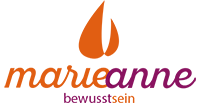Purchase order vs invoice: What key differences should you know?

The seller will reference the purchase order number on the invoice, to show the product or services provided was pre-approved. You must debit your accounts receivable account after you send the order to the buyer. Once you receive the buyer’s payment, reverse the entry by crediting your accounts receivable account. If you’re having a hard time understanding the process, take a look at the steps below. A purchase order is typically a printed document signed by both the buyer and the seller.
Wild Purchases People Actually Made With the Amex Black Card – The Motley Fool
Wild Purchases People Actually Made With the Amex Black Card.
Posted: Tue, 21 Nov 2023 22:05:36 GMT [source]
An invoice will have the seller’s payment information, bank details, and due date. That way, you know exactly how much you need to pay and when you need to pay it. Once the buyer receives the invoice, they can review it and make payment according to the agreed terms.
How are purchase orders different from sales orders?
With an invoice, you can clearly state what you’ve done, how much it costs, and when payment is due. In larger companies, purchase orders are essential for maintaining control over purchasing. Plus, they allow you to manage your inventory effectively by providing a record of past purchase orders, giving insight into how often you need to replenish your stock. One of the biggest differences between a PO and an invoice is the payment details.
- A purchase order is often a printed document that is signed by the buyer and the seller.
- A detailed description of the products or services provided, including quantity, unit price, and total amount.
- For example, purchasing office supplies, a laptop computer, or other items used on a regular basis usually will be done with a PO.
- However, once the PO is accepted, it becomes a legally binding contract for both parties involved.
- A purchase order is typically generated before the goods or services are delivered, serving as authorization for the seller to proceed with fulfilling the order.
When it’s time to ship the items overseas, John includes the purchase order number on the shipping forms. The assistant doesn’t immediately know what the order is about, or which store the furniture is for, so he asks for the purchase order number. Now that he’s in the loop, he authorizes the payment of the duty fees so that the furniture will be released and delivery will be completed. Before he signs off, John makes a request that payment to his company be made within 30 days of delivery and that this information be included in the purchase order too. It acts as an official agreement between buyer and seller, authorized by the management of both companies. After the buyer receives the products, they also receive an invoice from the seller.
Why Is An Invoice Important?
First, it’s important to limit the amount of touch points on purchase order tracking where possible. The more people, departments, and points of transfer get involved with purchase order tracking, the more opportunities there are for mistakes or mishandling. Finally, you’ll include any details about payment, indicating your payment method and the date you anticipate paying your seller. how is a purchase order different from a bill Depending on the vendor, you may be bound to the terms and methods they allow, so always double-check before placing an order. Like a standard PO, a planned purchase order includes a lot of detailed information, but it will not include a delivery date or location. This is useful for something you know your business will need eventually, but you aren’t sure about the exact date.

For reference, an invoice contains the original purchase order number. This will demonstrate to the buyer’s finance team that this transaction had previously been budgeted for and approved. Those unfamiliar with the procurement process may find it difficult to distinguish between purchase orders (POs) and invoices. Now you know the difference between purchase order vs invoice, you’ll see that both play a key role in the purchasing cycle. If your vendor is used to receiving purchase orders, you’ll get your shipment faster if you send them one. With everything they need to know in one place, the purchasing process is straightforward—so there will be no back and forth and no miscommunication.
